Day 1 of a three day Summer Tour. It was a lovely sunny morning, clouding over in the afternoon, but thankfully the rain held off until after we had finished. We spent the day down in the Broads.
Shortly after we set off on the long drive down, we passed a set of barns by the side of the road. As we approached we could see a shape right on the ridge, above the far gable. One of the resident Little Owls still out, enjoying the early sunshine. We stopped for a quick look from the minibus, where we wouldn’t disturb it.
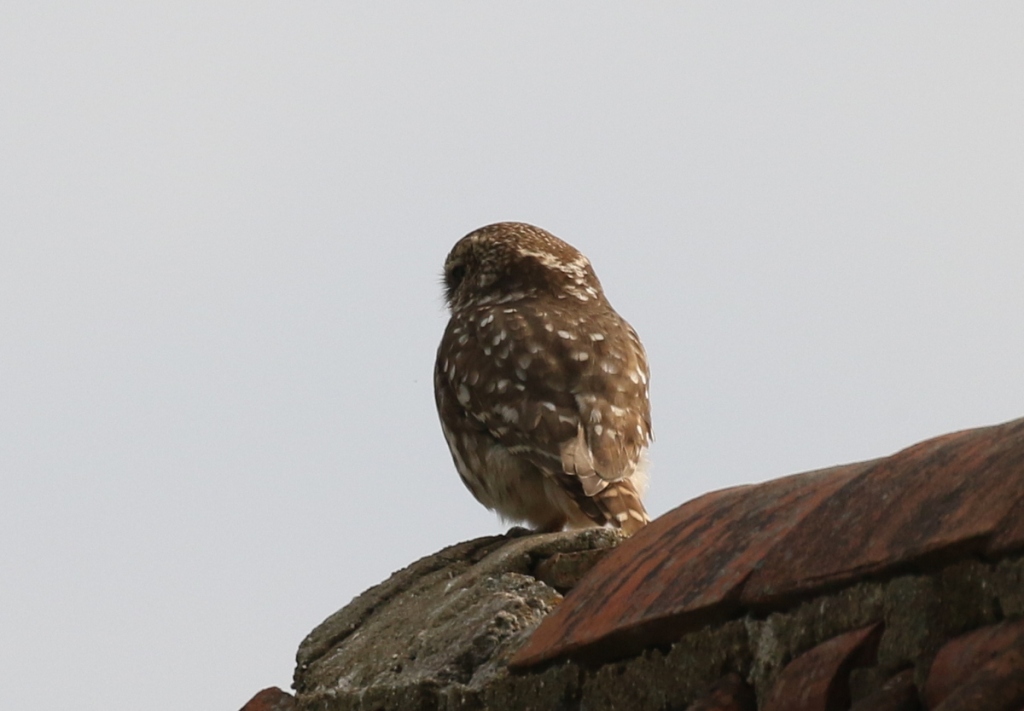
Unfortunately these barns have been granted planning permission for conversion into housing and have just been sold. The developers are moving in and the Little Owls will soon lose their home. It has been a recurring theme for some time, but has accelerated in the last year or two, with the mad rush to build houses at any cost and the resulting relaxation of planning constraints – many of these barns were deemed unsuitable for development in the last planning review!
Continuing on our way, a Red Kite drifted over. With the windows open, we could hear lots of birds singing. A Yellowhammer was giving its ‘little-bit-of-bread-and-no-cheeeese’, perched on the wires over the road.
When we finally arrived at Hickling Broad, we set off along the track towards Stubb Mill. A Common Whitethroat was singing in the top of one of the bushes ahead of us. There were several Chiffchaffs in the trees and Reed Warblers flitting in and out of the reedy ditch by the path.
Looking over the bank at Brendan’s Marsh, we could see the Black-winged Stilts on the first pool, so we walked back to the junction and up the Whiteslea track instead, up to the viewpoint where we would have a better view from up on the bank. The Black-winged Stilts were feeding behind a low line of reeds but were often visible through a small gap and kept coming out into view beyond the end of the reeds too. We could see their long, bubble-gum pink legs.
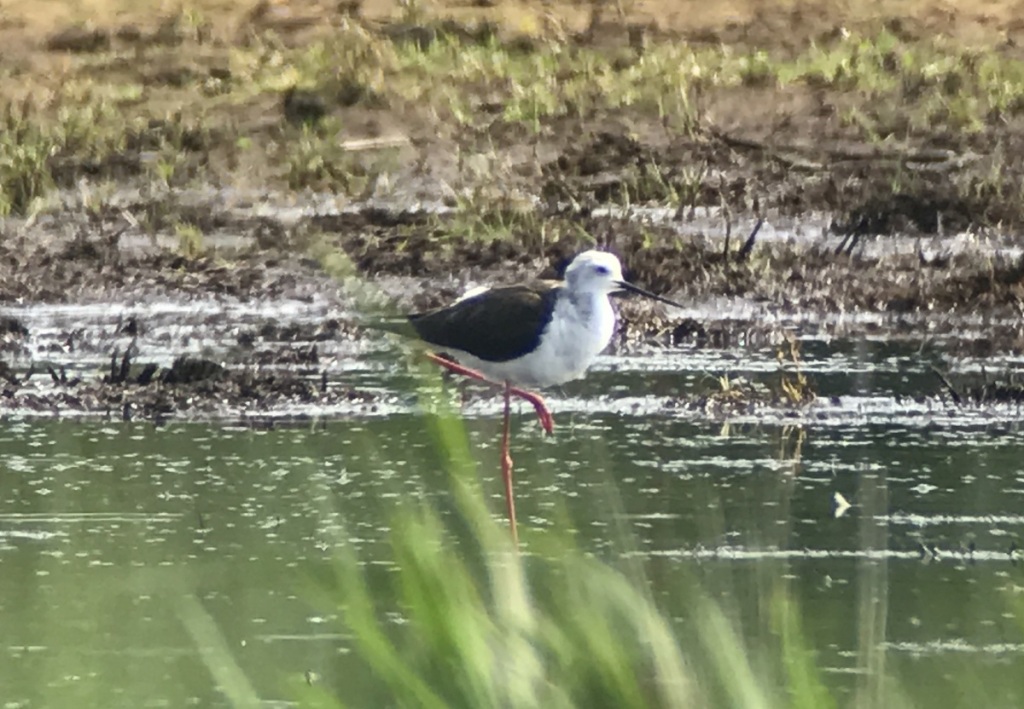
There were lots of other waders on the pool too. Several Ruff, in various colours and bewildering different stages of moult, a couple of Little Ringed Plovers, two Common Snipe, a Green Sandpiper briefly before everything was flushed by a passing Marsh Harrier, and a few Avocets. A pair of Egyptian Geese were loafing on one of the islands and two Little Grebes swam across in front.
It is a good vantage point here, from which to scan the surrounding pools and reedbeds. A Bittern came up out of the reeds behind us, flying across low over the tops before dropping back in again. It was a good morning for Bitterns, with the birds very active, probably flying in and out feeding young. We saw at least 4 flights, probably three different birds.
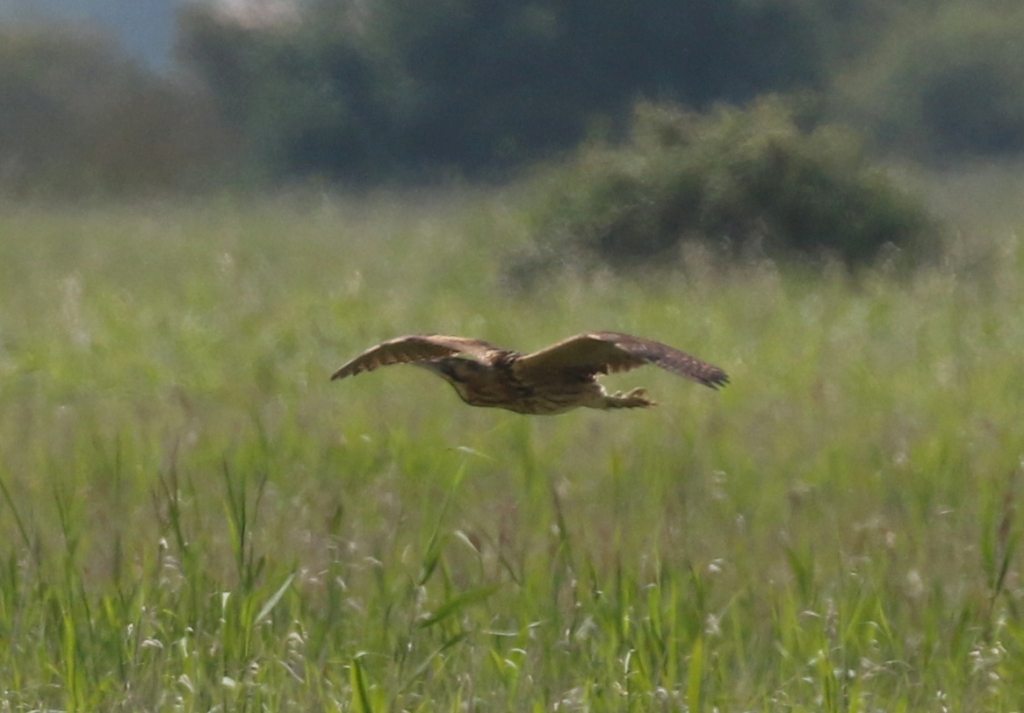
Two Common Cranes circled up in the distance, beyond the trees, trying to make use of the increasing heat to find a thermal. We watched them in the scopes as they drifted across and dropped back down out of view. A Spoonbill was just visible in the heat haze in the dead trees in the middle of the reedbed, and two flew out, dropping down behind the reeds to the pools further along. A Grey Heron perched up preening in the sunshine.
A Yellow Wagtail flew over behind us calling. A Hooded Crow hybrid flew in to the pools the other side of the track, landing with a Carrion Crow briefly. Three Little Egrets flew in too. A male Marsh Harrier drifted in and hovered over the pools just the other side of the track from us, before flying off.
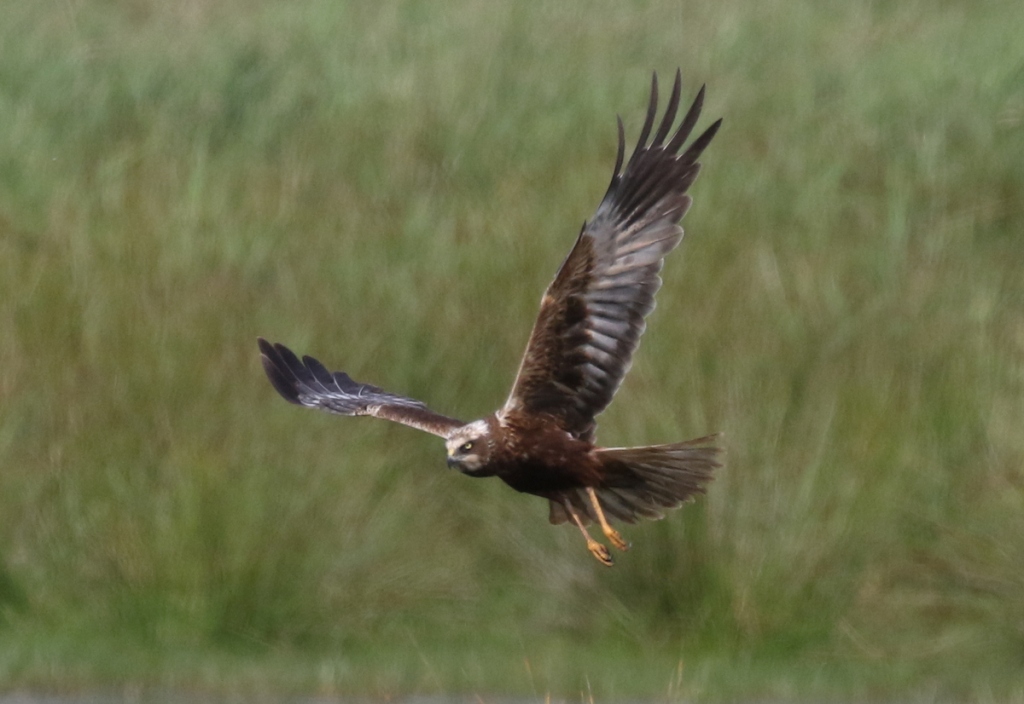
There was a good selection of insects here too. One or two Norfolk Hawker dragonflies were hawking over the bank. A selection of butterflies were nectaring on the creeping thistle – Meadow Browns, Small Skippers and some very smart fresh second generation Small Tortoiseshells.
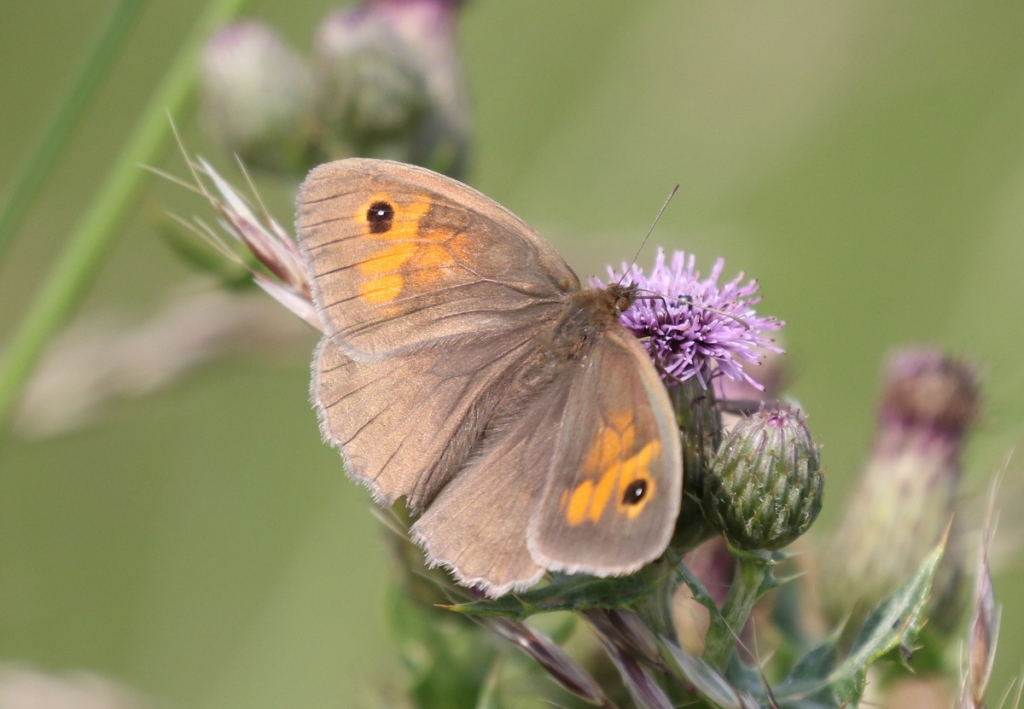
Eventually we managed to tear ourselves away and walked back to the Stubb Mill track again to explore further along. There were lots of tits in the trees now, including several Long-tailed Tits flitting around in the branches ahead of us.
Scanning with the scope, we picked up a few more waders from the new viewing platform, taking it in turns to come up for a look. There were several Greenshank and Dunlin on here to add to the list, as well as lots more Ruff, but no sign of the Wood Sandpiper or Spotted Redshank we had hoped to find here.
We continued on to the far end of the track, and scanned the pools this end from up on the bank. There were several Lapwings around the pools, a single Teal and Tufted Duck asleep at the back and a couple of Canada Geese with the Greylags. A Spoonbill appeared from behind the reeds at the back, bathing in the water and flashing its long spoon-shaped bill. We just make out a couple more still in the trees beyond, through the hear haze.
It was time to start heading back for lunch, but just as we had turned to leave one of the group spotted another pair of Cranes in the distance over Horsey Mere. We watched as they flew across, continuing over Heigham Holmes before disappearing over the south side of the broad.
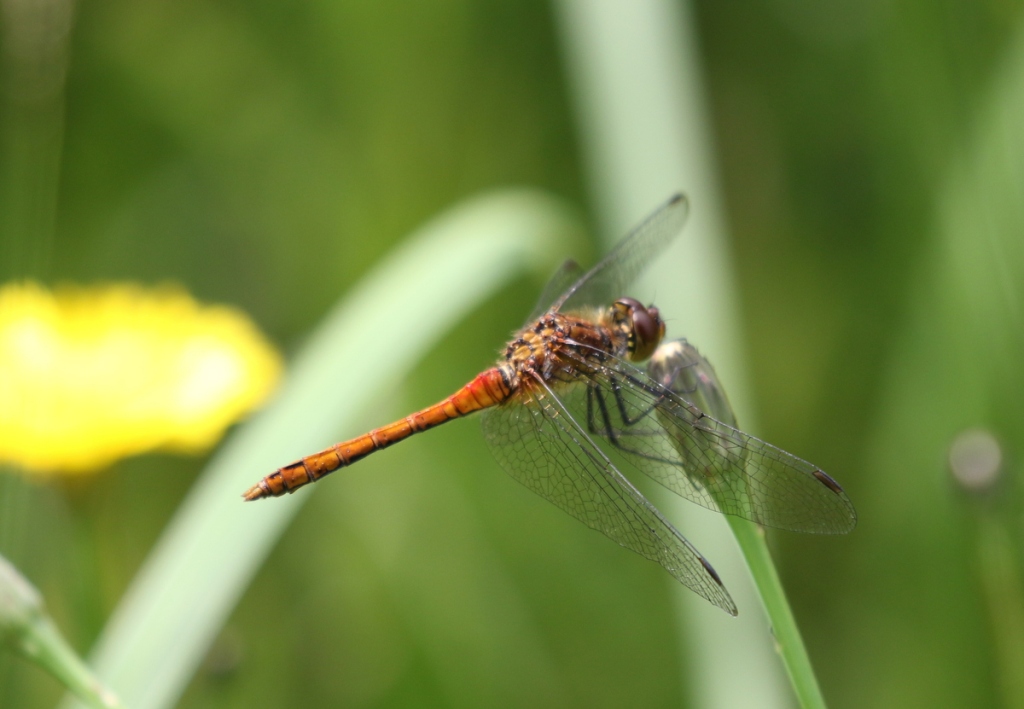
There were several Ruddy Darter dragonflies by the path on the way back, as well as Common Blue and Blue-tailed Damselflies. We stopped again at the viewing platform, where a Green Sandpiper was now on the front edge of the pools, for those who had missed it earlier. A Willow Warbler was calling from the bushes by the overflow car park, much more disyllabic than the call of Chiffchaff, and flitted out ahead of us.
We had lunch in the sunshine in the picnic area. A couple of the group even succumbed to the temptation of the gooseberry ice cream! The clouds had started to bubble up over lunch, and it clouded over as we set out again, although it was still very warm. It is the end of the flight season now but there were meant to be still one or two Swallowtails out, so we walked round towards the broad to see if we could find one. We didn’t manage to, but we did see a fresh White Admiral which fluttered around the bushes just beyond the picnic area. Another Norfolk Hawker was flying around here too.
A Green Woodpecker was yaffling in the trees and a Water Rail squealed from deep in the reeds by the path as we passed. We had a quick stop at the viewpoint to look out at the Broad, where there were lots of Mute Swans and a couple of distant Common Terns. A Black-tailed Skimmer dragonfly kept landing on the information board just beyond the boat mooring.
Continuing on along the path towards the observatory, it was quiet now in the early afternoon. We did hear a couple of Bearded Tits pinging, and turned to see them fly across the path just behind us. They flew out over the reeds the other side, but dropped straight in out of view. A Reed Warbler flitting around in the tops of the reeds was more obliging.
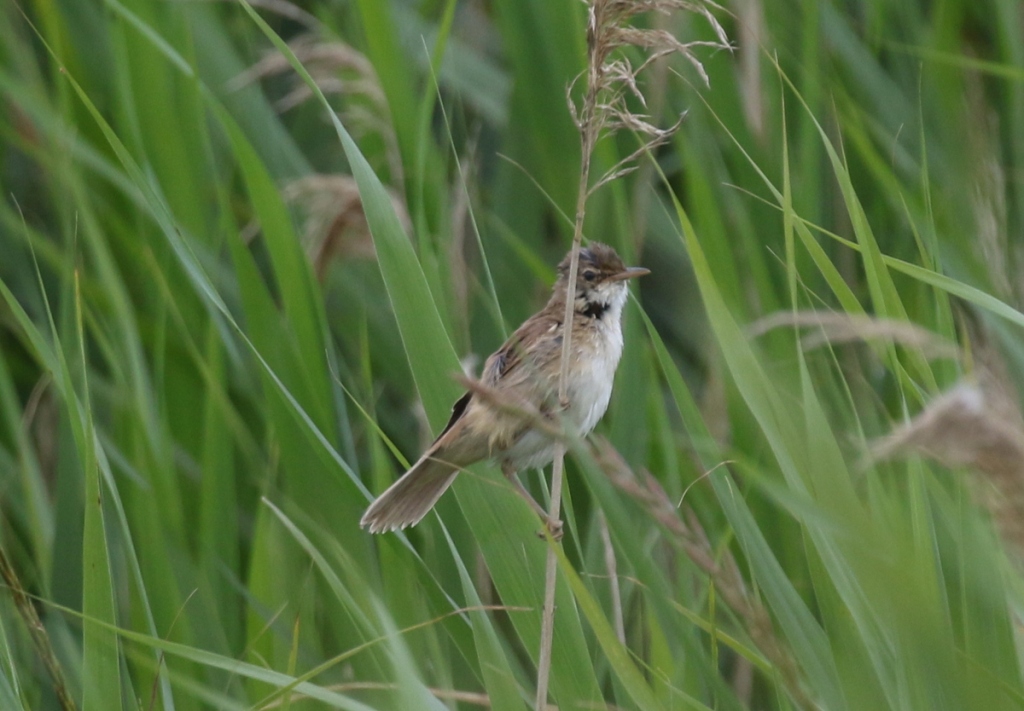
Past Whiteslea Lodge, we turned onto the bank back towards the viewpoint. A couple of Common Terns flew over and a Bittern appeared briefly out of the reeds behind us. With the cloud now, the Common Swifts were hawking lower out over the reedbed. As we arrived back at the viewpoint again, we could hear Cranes calling, and just glimpsed two disappearing behind the trees towards Stubb Mill.
The Black-winged Stilts were much closer now, and we had a great view of them through the scope. They were more active, jumping and flapping their wings, then suddenly they took off. They gained height quickly and looked as if they were flying off, but then turned back and dropped steeply back down out of sight onto the last pool. They were only gone a couple of minutes, and as we were looking through the other waders they suddenly flew back in.
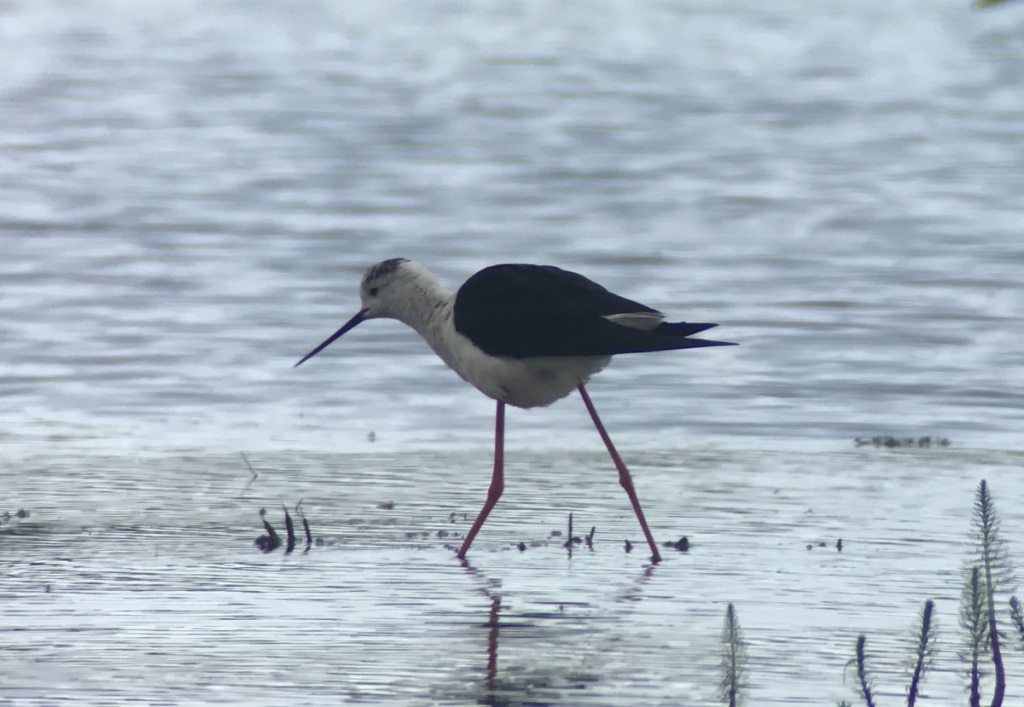
Turning back to the Stilts, we noticed that the Spotted Redshank had appeared between them. We had a good view through the scope, a moulting adult its black breeding plumage mottled with winter white now, but we could see its long needle find bill. There was a single Black-tailed Godwit out here too now. The Wood Sandpiper was not so obliging – we could hear it calling, but couldn’t find it anywhere, so presumably it was hidden behind the reeds.
It continued to taunt us as we made our way back to the Visitor Centre, cutting back along the path through the trees. A male Blackcap flew out of the brambles and across the path in front of us. A Variable Damselfly settled on the vegetation nearby, allowing us to see its broken ante-humeral stripe.
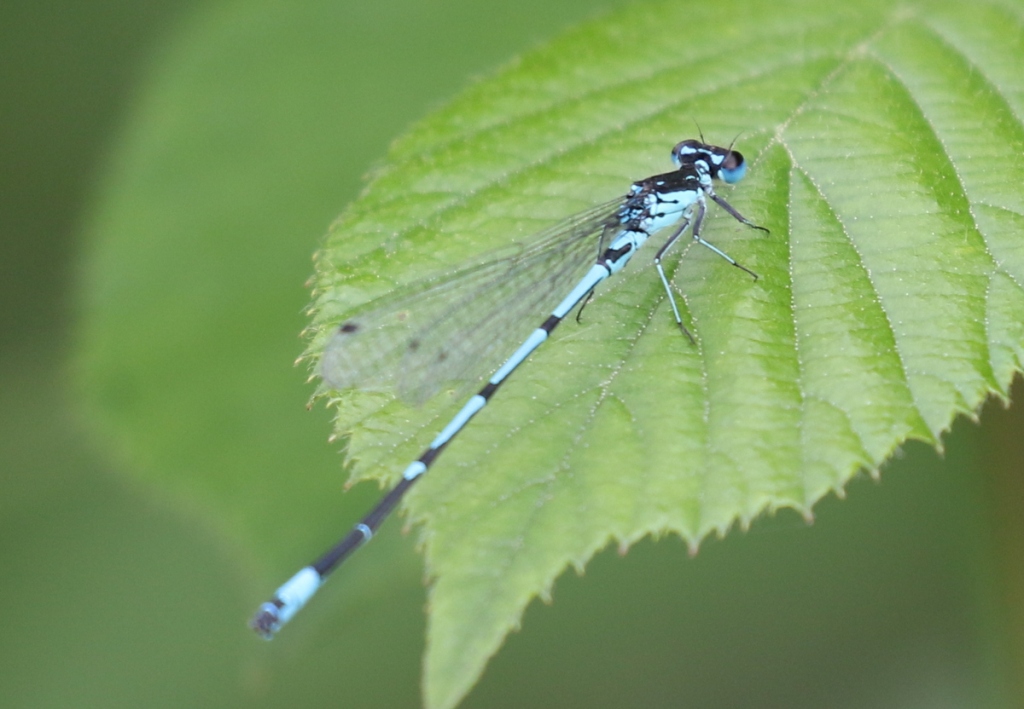
We still had a bit of time left, so we drove round to Potter Heigham thinking we would have a quick look at the marshes there. As we got out of the minibus, we could see threatening dark clouds away to the west, but it wasn’t clear at first whether they were coming our way. We stopped to have a look at the first pool where a Common Sandpiper was on one of the islands, dwarfed by a nearby Little Egret. There were lots of Lapwings on here too.
Carrying on down the track, the reeds were now too tall to see into most of the other pools, although we could occasionally find a gap where we could get a narrow view. We continued on down to the end and up onto the bank, where we could benefit from a bit of height to see over. A Water Rail squealed from deep in the reeds. There was a single rusty eclipse drake Wigeon on the first pool here, and a Great Crested Grebe.
It was clear now that the dark clouds were heading our way, and we could hear thunder in the distance. Discretion is the better part of valour, so we decided to call it a day now and head back rather than risk getting a soaking!
















